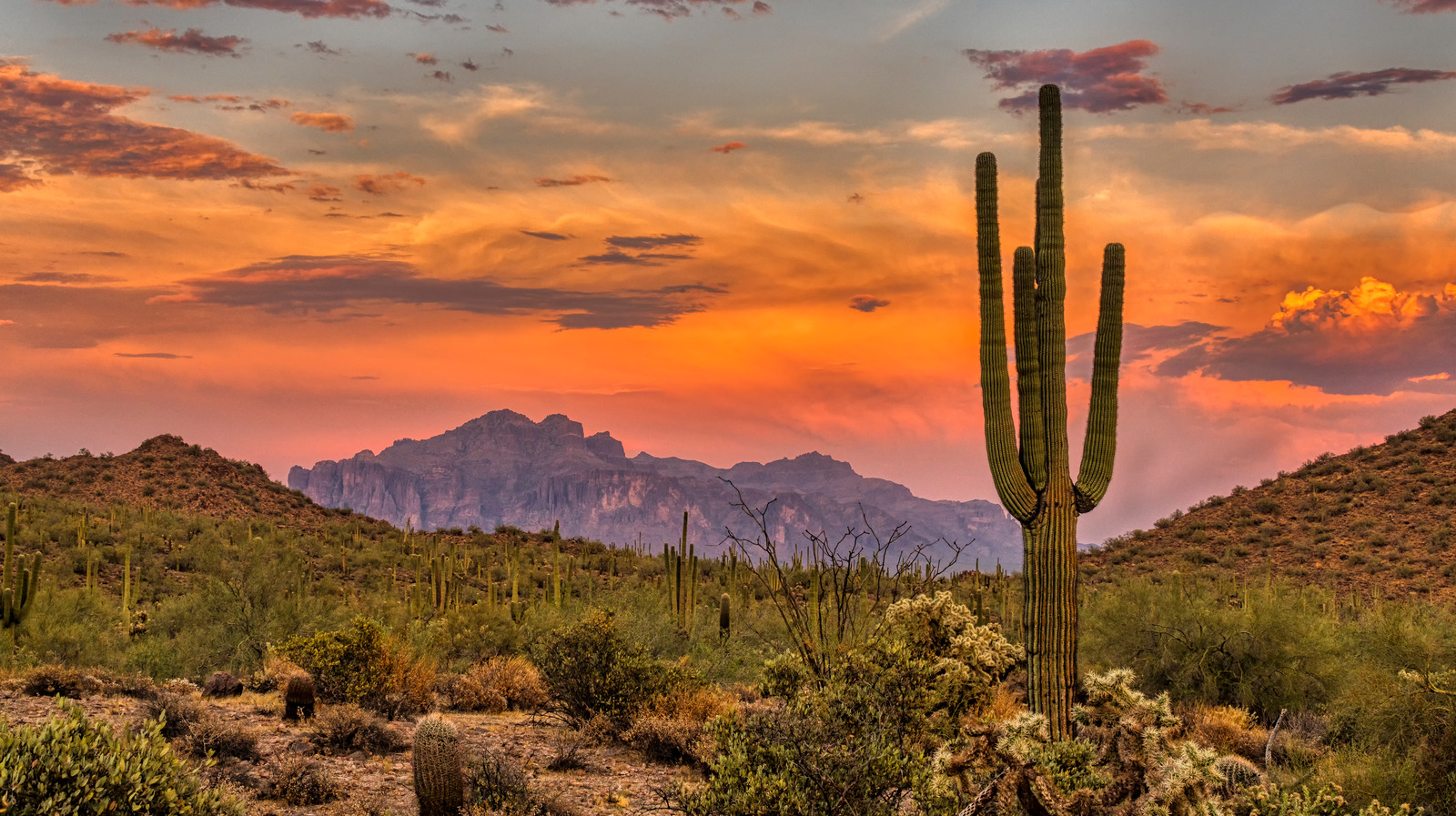
What Could Happen If The Saguaro Cactus Goes Extinct? – Grunge
The saguaro cactus — with its arm-like appendages, towering height, and spine-covered body — is synonymous with the Sonoran Desert and is often a visual shorthand for the Old West (try to picture a classic Western film without them). But like those old films, these stately desert plants found in parts of Arizona, California, and Mexico may end up a thing of the past. Changing weather patterns and a rise in temperatures brought on by climate change are pushing the saguaro to the brink, according to PBS NewsHour.
If saguaros go extinct, there would be a cascading series of negative impacts on the other creatures of the Sonoran Desert as well as economic ones for the area’s residents. “Without saguaros, in a lot of ways, giant pieces of the Sonoran Desert ecosystem just implode,” Jonathan Horst, Director of Conservation and Research at the Tucson Audubon Society, told PBS. Desert-dwellers of all kinds, from birds to foxes, javelinas to bats, all rely on the saguaro for food. For humans, it’s tourist dollars at stake if the majestic cacti are no longer a draw, per the National Parks Conservation Association (NPCA).
Out of sync
 Sassy1902/Getty Images
Sassy1902/Getty Images
The saguaro cactus can only be found in the Sonoran Desert. They can reach heights of up to 60 feet — making them the largest cacti in the United States — and live for as long as 200 years, according to the Arizona-Sonora Desert Museum. Over millennia, these cacti have adapted to their harsh environment by syncing their reproductive cycle to the summer monsoon season, according to the National Parks Conservation Association.
“They know exactly when they need to put up the fruit to put out the seeds, to get the seeds carried by the animals, to get seeds deposited just in time for the first monsoon rains,” Andy L. Fisher, chief of interpretation for Saguaro National Park in Tucson, Arizona, told the NPCA. But because of climate change, the monsoon rains are coming late, cutting down on the saguaro’s chances of reproducing. This also means the animals and insects that rely on the cacti are also headed for trouble.
Ecological changes and economics
 Mario Tama/Getty Images
Mario Tama/Getty Images
Many desert creatures rely on the saguaro for “shelter, food, and nesting sites,” making the cacti vital for the ecosystem, according to the USGS. This summer, parts of Arizona have seen a brutal heatwave that’s also wreaked havoc on many saguaros, per the Associated Press. With the loss of the saguaro, there’s the potential for the further encroachment of invasive Buffelgrass into the Sonoran Desert, which poses a fire hazard. Ben Wilder, an ecologist, told PBS NewsHour that the increase in these grasses “introduces a fire regime to the desert that’s pretty novel. It’s eye-opening in terms of, what is the desert capacity for resilience in the face of fire? And that’s truly an open question right now.”
Besides the increase in wildfires, the non-native grasses edge out native plants, including the saguaro, meaning the traditional desert landscape may also disappear. “The tourism industry is a huge part of our economy here in Arizona,” Kim Franklin, a conservation scientist, told the National Parks Conservation Association. “Losing saguaros, losing these beautiful landscapes, would have a big impact on our economy.”


































